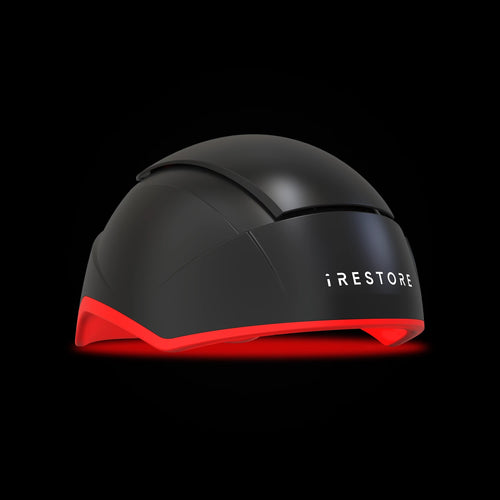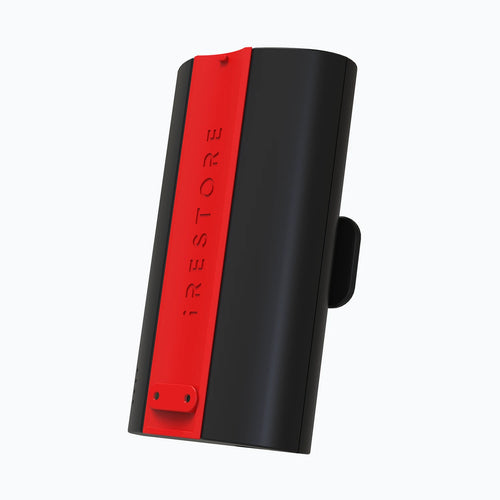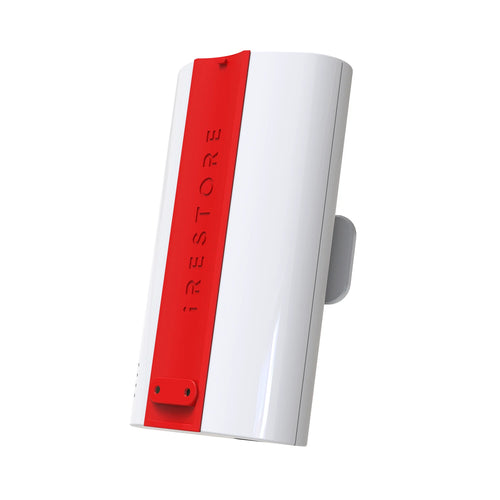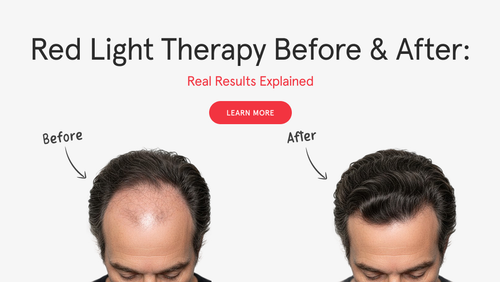Noticing short, fine hairs around your hairline or crown and wondering if they’re signs of new hair growth or breakage? You’re not alone. Many people mistake regrowth for damage or vice versa which can lead to using the wrong products or treatments.
The truth is, those tiny strands could mean your follicles are bouncing back… or that your hair is snapping under stress. Understanding the difference is the first step to supporting stronger, healthier strands.
With consistent scalp care and science-backed solutions like scalp massage for hair growth, you can help protect new growth, reduce breakage, and improve your hair’s long-term resilience.
What’s the Difference Between New Hair Growth and Breakage?
Telling the difference between new hair growth and hair breakage comes down to how those short strands look, feel, and grow over time.
New hair growth starts at the scalp and appears as fine, soft baby hairs usually around the hairline, temples, or crown. These new strands are typically uniform in length, smooth to the touch, and grow steadily longer as your hair recovers its natural density.
Hair breakage, on the other hand, happens when existing strands snap mid-shaft due to weakness or damage. Broken hairs tend to be uneven in length, coarse or frizzy at the ends, and may feel dry or brittle. You’ll often see them sticking up around the crown or part line without showing signs of growth.
If you notice uneven patches of short hairs that never seem to get longer, it’s likely breakage, not regrowth. But if those fine, baby-like hairs are increasing in number and thickness, it’s a sign your follicles are actively producing new growth and responding well to scalp stimulation and proper care.
How to Identify New Hair Growth
Spotting new hair growth can be encouraging, it’s a sign your scalp and follicles are recovering. But real regrowth has a few distinct traits that set it apart from breakage.
You’re likely seeing new growth if:
-
The hairs are soft, fine, and tapered at the ends — not blunt or frayed.
-
They grow uniformly around the hairline, temples, or crown.
-
The strands feel smooth and flexible, not coarse or dry.
-
You notice gradual lengthening over several weeks instead of a static patch of short hairs.
These new strands often start as thin “baby hairs” before maturing into thicker, stronger strands as your hair cycle stabilizes.
Signs You’re Dealing with Hair Breakage
If those short strands feel rough, uneven, or never seem to grow longer, you’re likely seeing hair breakage rather than new growth. Breakage happens when the hair shaft weakens and snaps before it completes its full growth cycle — often due to external stress or internal imbalance.
Common signs include:
-
Uneven length: Some pieces are much shorter than surrounding hair.
-
Dry, brittle texture: Strands feel coarse or straw-like, especially at the ends.
-
Frizz and flyaways: Short broken hairs stick up around the crown or hairline.
-
Split or frayed ends: Damaged fibers separate instead of staying smooth.
Frequent heat styling, tight ponytails, rough brushing, or chemical treatments can all cause breakage over time. Even stress or nutritional deficiencies can weaken hair’s structure from within.
If you’re noticing these signs, focus on repair and protection, hydrate the hair, minimize tension, and strengthen follicles with red light therapy to restore scalp health and support long-term resilience.
Common Causes of Breakage
Hair breakage is often a sign that your strands are stressed, dehydrated, or lacking the nutrients similar to what happens in seasonal hair shedding and they need to stay strong. Over time, these small cracks in the hair shaft lead to visible thinning and dullness even if your scalp is still producing new hair.
-
Heat Damage: Frequent blow-drying, straightening, or curling breaks down keratin bonds.
-
Tight Hairstyles: Constant tension from ponytails, braids, or clips strains the roots and weakens the shaft.
-
Chemical Treatments: Bleaching, coloring, or relaxing can make strands porous and fragile.
-
Poor Nutrition: Low intake of protein, iron, and zinc affects the hair’s structural strength.
-
Environmental Stress: UV rays, pollution, and hard water can erode the protective cuticle layer.
How to Prevent Breakage
-
Be gentle: Use a wide-tooth comb and detangle only when hair is damp, not soaking wet.
-
Avoid harsh products: Switch to sulfate-free shampoos and nourishing conditioners.
-
Protect from heat: Always apply a heat protectant before styling.
-
Support scalp health: Regular massage promotes circulation and nutrient delivery.
-
Try red light therapy: iRESTORE’s FDA-cleared red light system energizes follicles, strengthens hair at the root, and helps reduce breakage by improving scalp blood flow.
How Red Light Therapy Strengthens Weak or Breaking Hair
Red light therapy, or Low-Level Laser Therapy (LLLT), is clinically proven to help reduce breakage and strengthen weak hair from the root. It works by delivering safe wavelengths of red light (around 650–680 nm) to the scalp, where it penetrates the skin and energizes follicle cells.
This light energy increases ATP production, the cellular fuel that powers growth and repair. As a result, blood flow and oxygen delivery to the scalp improve, helping nourish follicles that are under stress. Over time, hair strands become thicker, more resilient, and less prone to snapping.
Studies show that regular use of LLLT can extend the hair’s growth phase and strengthen the cuticle layer, which helps prevent further breakage.
For at-home use, iRESTORE’s FDA-cleared red light therapy system makes it easy to support follicle health and reduce shedding safely and effectively.

When to Seek Professional Help
If hair breakage or thinning continues despite home care, professional guidance can help.
See a dermatologist or trichologist if:
-
Breakage persists or worsens after several months.
-
You notice increased shedding or scalp irritation.
-
Short hairs appear uneven or brittle across multiple areas.
A specialist may:
-
Perform scalp imaging or trichoscopy to check follicle health.
-
Order blood tests to detect hormonal or nutrient imbalances.
-
Recommend a customized plan from topical care to supplements.
Conclusion
Understanding the difference between new hair growth and breakage helps you take action early before small issues become major setbacks.
Healthy regrowth appears soft, fine, and uniform, while breakage feels rough and uneven. By improving scalp circulation, maintaining hydration, and using iRESTORE’s FDA-cleared red light therapy, you can strengthen your strands and protect new growth as it develops.
Small, consistent care habits from gentle styling to regular light therapy go a long way toward keeping your hair stronger, shinier, and more resilient every day.
FAQs
How do I know if the short hairs on my scalp are new growth or breakage?
New growth feels soft, fine, and tapers at the end, while breakage feels rough, frayed, and uneven. Watch how the strands behave, regrowth lengthens over time, breakage does not.
Can new hair growth and breakage happen at the same time?
Yes. It’s common to see new hairs growing while older ones are breaking. The key is to protect existing strands while stimulating healthy regrowth through gentle care and scalp treatments.
How can I reduce hair breakage naturally?
Use sulfate-free products, avoid excessive heat, nourish your scalp, and include more protein and vitamins in your diet. Gentle brushing and red light therapy also help strengthen roots.
Disclaimer: The iRESTORE blog is for informational purposes only and is not intended to replace professional medical advice or treatment. Please do not ignore professional guidance because of information you’ve read here. If you have concerns about your hair or skin health, we encourage you to consult a qualified healthcare professional.



















